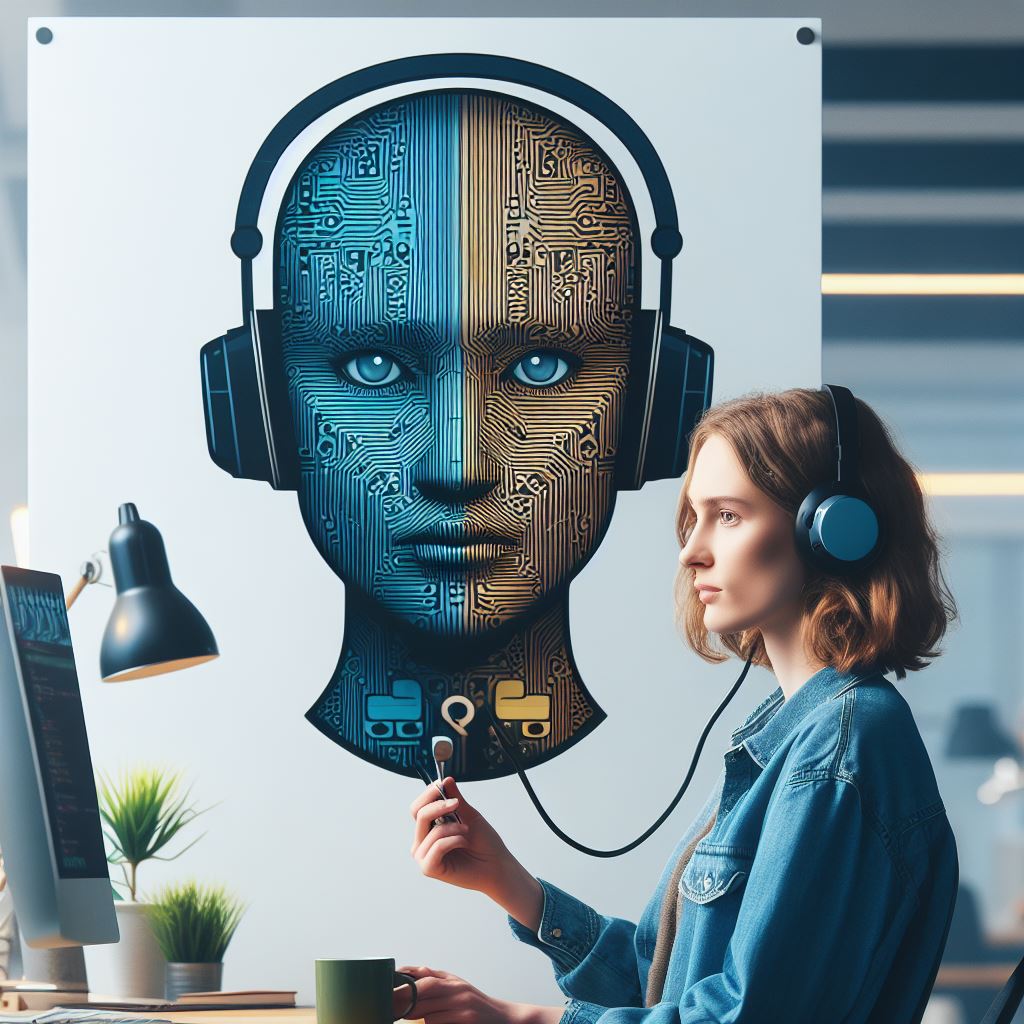Introduction
Coding platforms have revolutionized the way people learn and engage in programming.
The purpose of this blog post is to provide an in-depth comparison between Scratch and other coding platforms.
Overview of Scratch
Define Scratch and its background
Scratch is a programming language and online community that allows users to create interactive stories, games, and animations.
Developed by the Lifelong Kindergarten Group at the MIT Media Lab, Scratch was first released in 2007.
Key features and functionality
- Block-based programming: Scratch uses a visual programming language that utilizes draggable blocks. This makes it easy for beginners to learn and understand coding concepts.
- Extensive library: Scratch offers a vast library of sprites, sounds, and backgrounds that users can incorporate into their projects.
- Interactive elements: With Scratch, users can create projects that respond to user input or interactions, making it ideal for creating games and interactive stories.
- Community support: Scratch has a large and active online community where users can share their projects, remix others’ creations, and receive feedback and support.
- Cross-platform compatibility: Scratch is available for Windows, Mac, and Linux operating systems, making it accessible to a wide range of users.
Its user-friendly interface and suitability for beginners
One of the defining features of Scratch is its user-friendly interface. The drag-and-drop blocks make it easy to build programs without having to worry about syntax errors.
Additionally, Scratch provides instant visual feedback, allowing users to see the results of their code immediately.
Scratch is designed with beginners in mind. The programming concepts are simplified, and the visual nature of the language helps users grasp abstract programming concepts more easily.
The extensive documentation and tutorials provided by the Scratch team further enhance its suitability for beginners.
Moreover, Scratch encourages collaboration and sharing within its community. Users can browse through other projects, learn from them, and even remix them to create their own unique projects.
This fosters a supportive learning environment where beginners can gain inspiration and learn from more experienced programmers.
In essence, Scratch is a versatile coding platform that offers an intuitive interface, a wide range of features, and a supportive community.
Its user-friendly nature makes it an excellent choice for beginners looking to learn programming and unleash their creativity.
Read: What Employers Think of Online Coding Degrees in 2023
Comparison with Other Coding Platforms
List of alternative coding platforms
- Python
- Java
- C++
- HTML/CSS/JavaScript
- Ruby
Comparison of supported languages and project types
- Python: Supports various programming paradigms and can be used for a wide range of projects including web development, data analysis, and artificial intelligence.
- Java: Popular for building enterprise-level applications and supports object-oriented programming. It is used in Android app development.
- C++: Suitable for systems programming and performance-critical tasks. Widely used in game development and operating systems.
- HTML/CSS/JavaScript: The trio is fundamental for building websites and web applications with interactive features.
- Ruby: Known for its simplicity and readability, Ruby is often used for web development and scripting tasks.
Assessment of accessibility and difficulty
- Scratch: Provides a user-friendly interface with drag-and-drop blocks, making it accessible for beginners, children, and non-technical users.
- Python: Considered relatively easy for beginners due to its readable syntax and comprehensive documentation.
- Java: Requires a deeper understanding of concepts like classes and objects, making it more suitable for intermediate learners.
- C++: Known for its complexity and steep learning curve, it is better suited for experienced programmers.
- HTML/CSS/JavaScript: HTML and CSS are beginner-friendly, while JavaScript has a steeper learning curve but offers more advanced functionality.
- Ruby: Known for its simplicity, Ruby is often considered beginner-friendly and suitable for those new to programming.
Evaluation of community and resources
- Scratch: Has a large and active community with a vast collection of user-generated projects and resources.
- Python: Benefits from a vibrant community with extensive documentation, libraries, and support forums.
- Java: With a massive community of developers, Java has abundant resources, tutorials, and forums for assistance.
- C++: Being a widely-used language, C++ has a strong community with numerous online resources and forums.
- HTML/CSS/JavaScript: These languages enjoy a vast and supportive community with abundant online resources and forums.
- Ruby: Although smaller compared to other languages, Ruby has an active community and many helpful resources.
Analysis of coding techniques and problem-solving approaches
- Scratch: Emphasizes visual programming with drag-and-drop blocks, focusing on logical thinking and problem-solving.
- Python: Promotes a clean and readable coding style, encourages modular programming, and provides powerful libraries for problem-solving.
- Java: Supports an object-oriented programming approach, promoting code reusability and modularity.
- C++: Enables low-level memory manipulation and access to hardware, allowing for efficient problem-solving.
- HTML/CSS/JavaScript: Requires a combination of markup, styling, and scripting for web development and interactive problem-solving.
- Ruby: Prioritizes simplicity and readability, making it easier to express problem-solving ideas in code.
By comparing these coding platforms, users can select the one that best suits their needs and goals.
Read: The Magic of Game Development with Scratch for Kids
Tech Consulting Tailored to Your Coding Journey
Get expert guidance in coding with a personalized consultation. Receive unique, actionable insights delivered in 1-3 business days.
Get StartedAdvantages of Scratch
Scratch Fosters Creativity and Critical Thinking Skills
Scratch is an ideal coding platform for nurturing creativity and developing critical thinking skills.
The platform encourages users to think outside the box and come up with innovative solutions to problems.
Through Scratch, users can create animated stories, interactive games, and engaging multimedia projects, allowing them to express their imagination and creativity.
Availability of Ready-to-Use Assets and Project Examples
Another advantage of Scratch is the vast library of ready-to-use assets and project examples it provides.
Users can easily access a wide range of sprites, backgrounds, sounds, and code blocks to enhance their projects.
This availability of resources saves time and enables beginners to learn by examining and modifying existing projects, gaining valuable insights into coding techniques and project structures.
Importance of Visual Programming for Younger Learners
Visual programming is a crucial aspect of Scratch that makes it suitable for younger learners.
Instead of typing complex lines of code, Scratch users can drag and drop colorful code blocks, making coding concepts easily understandable and accessible to children.
This visual representation of code fosters a deeper comprehension of programming logic and enhances problem-solving skills from an early age.
Wide Age Range of Engaging and Educational Users
Scratch caters to a wide age range of users, from elementary school students to adults.
Its visual and intuitive interface allows young learners to grasp coding fundamentals, while the platform also offers advanced features for more experienced users.
This versatility makes Scratch a tool that evolves with its users as they progress in their coding journey.
Additionally, the Scratch community encourages collaboration and peer learning, further enhancing the educational value of the platform for users of all ages.
In fact, Scratch offers numerous advantages that set it apart from other coding platforms. It fosters creativity, critical thinking, and problem-solving skills, thanks to its visual and interactive nature.
Build Your Vision, Perfectly Tailored
Get a custom-built website or application that matches your vision and needs. Stand out from the crowd with a solution designed just for you—professional, scalable, and seamless.
Get StartedThe availability of ready-to-use assets and project examples accelerates the learning process and inspires users to explore new possibilities.
Furthermore, Scratch’s suitability for younger learners and engaging features for users of all ages make it a powerful educational tool.
Whether you are a beginner or an experienced programmer, Scratch provides an inclusive and enjoyable coding environment.
Read: Exploring Python’s Lambda Functions & Use Cases

Drawbacks of Scratch
While Scratch is a popular coding platform known for its simplicity and accessibility, it does have some limitations that may hinder more advanced programming concepts and scalability.
In this section, we will address the drawbacks of Scratch and potential challenges that users may face when transitioning to more advanced languages.
Limitations in terms of scalability and complexity
- Limited project size: Scratch projects have a tendency to become messy and hard to manage as they grow larger. The platform lacks the capability to handle complex and large-scale projects efficiently.
- Performance issues: As projects become more intricate and resource-intensive, Scratch may suffer from performance issues. This can impact the smooth execution of programs and frustrate users.
- Lack of optimization options: Scratch does not provide tools or features to optimize code for performance or memory usage.
This limitation restrains users from gaining expertise in optimizing their programs.
Restricted functionality for advanced programming concepts
- Limited control flow statements: Scratch offers a simplified block-based interface, which restricts the availability and flexibility of traditional control flow statements like loops and conditional statements.
This can be a hindrance for users looking to build more complex programs. - Lack of data structures: Elementary data structures like arrays and linked lists are not directly supported in Scratch.
This makes it difficult to implement advanced algorithms that rely on these data structures. - Absence of object-oriented programming: Scratch lacks robust support for object-oriented programming concepts.
This is a significant limitation for users who want to master this fundamental aspect of programming.
Challenges in transitioning to more advanced languages
- Syntax differences: Scratch uses a visual programming language with a block-based interface, whereas most advanced coding languages utilize text-based coding with specific syntax rules.
Users transitioning to text-based languages may struggle initially with syntax differences. - Steeper learning curve: Moving from Scratch to more advanced languages requires familiarizing oneself with new programming paradigms, principles, and methodologies.
This transition can be challenging, especially for beginners. - Debugging challenges: Scratch simplifies the debugging process by highlighting problematic blocks.
Transitioning to text-based languages may introduce more complex debugging techniques, making it harder to identify and fix errors. - Lesser visual support: Unlike Scratch, many advanced languages lack the visual feedback and draggable blocks that facilitate learning and quick prototyping.
Users accustomed to Scratch’s visual environment may find it difficult to adapt to the absence of such assistance.
In short, while Scratch is an excellent platform for beginners and allows for initial exploration of coding concepts, it does have notable drawbacks as users progress to more advanced programming.
The limitations in terms of scalability and complexity, restricted functionality for advanced concepts, and challenges in transitioning to other languages highlight the need for users to broaden their coding skills beyond Scratch.
Read: Understanding Python Syntax: A Beginner’s Guide
Comparison Results and Recommendations
The strengths and weaknesses of Scratch compared to other platforms
Strengths of Scratch
- Intuitive and user-friendly interface, making it ideal for beginners
- Visual programming language that promotes creativity and logical thinking
- Large online community providing support and a vast collection of shared projects
- Availability of a wide range of educational resources specifically designed for Scratch
- Compatibility with multiple operating systems and devices
Weaknesses of Scratch
- Limitations in advanced programming concepts and functionalities
- Difficulty in creating complex projects due to the graphical nature of the platform
- Lack of support for text-based programming languages or integration with external tools
- Performance issues when handling extensive calculations or graphics-intensive projects
- Less suitable for professional software development or industry-level projects
Recommendations based on specific user needs and proficiency levels
Beginner level
- Scratch is highly recommended for beginners due to its simplicity and educational focus.
- Its visual interface and extensive learning resources will help novices grasp programming concepts easily.
Intermediate level
- For intermediate users looking to gain additional programming knowledge, it is advised to explore other platforms.
- Platforms like Python or JavaScript can offer a more comprehensive understanding of text-based programming.
Advanced level
- At advanced levels, consider platforms like Java or C++ for deeper exploration of software development principles.
- Advanced programmers may find Scratch limiting, but it can still be used for prototyping or simple projects.
Encouraging experimentation with multiple platforms to discover the most suitable fit
Every user has unique requirements and preferences, so it is recommended to experiment with different coding platforms.
By trying out various platforms, users can gain a better understanding of their strengths and weaknesses.
Experimentation allows users to determine the most suitable platform based on their specific needs and goals.
There is no one-size-fits-all solution, as the ideal platform will vary depending on the user’s proficiency level and project requirements.
Therefore, embrace the opportunity to explore and experiment with multiple coding platforms to find the perfect fit.
Optimize Your Profile, Get Noticed
Make your resume and LinkedIn stand out to employers with a profile that highlights your technical skills and project experience. Elevate your career with a polished and professional presence.
Get NoticedConclusion
A careful comparison between Scratch and other coding platforms has been conducted to explore the differences in features and capabilities.
The main points discussed in the blog post can be summarized as follows:
- Scratch is a beginner-friendly coding platform that prioritizes visual programming and fosters creativity.
- Other coding platforms, such as Python and JavaScript, offer more advanced and versatile coding options.
- While Scratch is great for beginners, transitioning to more powerful platforms is essential for professional growth.
Choosing a coding platform should be based on individual goals, whether it be gaining a strong foundation in programming or pursuing specific projects.
It is important to assess personal needs and desired outcomes.
However, it is also crucial to remember that coding is a diverse field, and exploring beyond Scratch can provide unique learning experiences.
Experimenting with different platforms can broaden horizons and allow for different approaches to coding.
Scratch is an excellent choice for beginners seeking an introduction to coding, but for those aiming for more advanced skills and diverse learning experiences, exploring other coding platforms is highly recommended.




